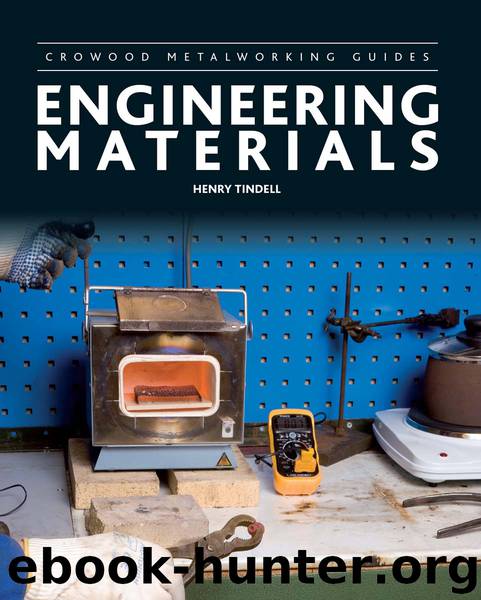Engineering Materials by Tindell Henry

Author:Tindell, Henry
Language: eng
Format: epub
Publisher: Crowood
Maximum strength (σy ~700–1500 N/mm2, 100–200 ksi)
Apart from a sole Cu-base alloy, precipitation hardened Cu-2 per cent Be, and the α + β titanium alloys, this category is the province of the specialized steels and high-Ni aerospace alloys. The commercial purity titaniums are not capable of joining this category and the other light alloys are left far behind.
It is relatively easy to achieve these strengths with the low-alloy steels of conventional quench and temper type, but they do usually have to contain sufficient carbon (>0.4 per cent C), making welding difficult, but quite practical with knowledge and experience. Typical of these steels is EN 24/AISI 4340, widely used in demanding power train applications. For the upper reaches of this category, resort is made to the precipitation hardening alloys, with higher Ni and additions of Cr and Co, making for expensive material.
A familiar high strength stainless steel that has been used in industry for many years is the 17-4 precipitation hardening (17.4 PH) type. These can achieve strengths in the upper range through an ageing treatment and with use of very low carbon (<0.02 per cent C), enabling the retention of good ductility for such a high strength material. There is a substantial family of alloys around this composition, as they offer additional corrosion and heat resistance, below the ageing temperatures, typically ~500°C.
The most highly developed titanium alloys, like the long established Ti-6Al-4V, can be extended well past the mid point of this category and so find significant applications in the entry section of jet engines for turbine blades where the temperature is limited. They possess a very high strength-to-weight ratio and high resistance to oxidation in these very critical applications. However, their cost and lack of lower grade uses usually makes their presence rare in the home workshop.
Normally, a more practical solution is the specialized steels, which can offer surprisingly accessible specific strengths, such as the high performance tubing met in the previous category, as Reynolds 931. This is a precipitation hardening stainless steel of the 17-4PH family, weldable for cycle frames, and providing a yield of ~1000 N/mm2 (150 ksi).
Download
This site does not store any files on its server. We only index and link to content provided by other sites. Please contact the content providers to delete copyright contents if any and email us, we'll remove relevant links or contents immediately.
| Concrete | Extraction & Processing |
| Fracture Mechanics | Materials Science |
| Metallurgy | Polymers & Textiles |
| Strength of Materials | Testing |
Whiskies Galore by Ian Buxton(41941)
Introduction to Aircraft Design (Cambridge Aerospace Series) by John P. Fielding(33095)
Small Unmanned Fixed-wing Aircraft Design by Andrew J. Keane Andras Sobester James P. Scanlan & András Sóbester & James P. Scanlan(32766)
Craft Beer for the Homebrewer by Michael Agnew(18200)
Turbulence by E. J. Noyes(7983)
The Complete Stick Figure Physics Tutorials by Allen Sarah(7339)
Kaplan MCAT General Chemistry Review by Kaplan(6903)
The Thirst by Nesbo Jo(6882)
Bad Blood by John Carreyrou(6584)
Modelling of Convective Heat and Mass Transfer in Rotating Flows by Igor V. Shevchuk(6408)
Learning SQL by Alan Beaulieu(6239)
Weapons of Math Destruction by Cathy O'Neil(6220)
Man-made Catastrophes and Risk Information Concealment by Dmitry Chernov & Didier Sornette(5958)
Digital Minimalism by Cal Newport;(5707)
Life 3.0: Being Human in the Age of Artificial Intelligence by Tegmark Max(5518)
iGen by Jean M. Twenge(5387)
Secrets of Antigravity Propulsion: Tesla, UFOs, and Classified Aerospace Technology by Ph.D. Paul A. Laviolette(5336)
Design of Trajectory Optimization Approach for Space Maneuver Vehicle Skip Entry Problems by Runqi Chai & Al Savvaris & Antonios Tsourdos & Senchun Chai(5040)
Pale Blue Dot by Carl Sagan(4960)
